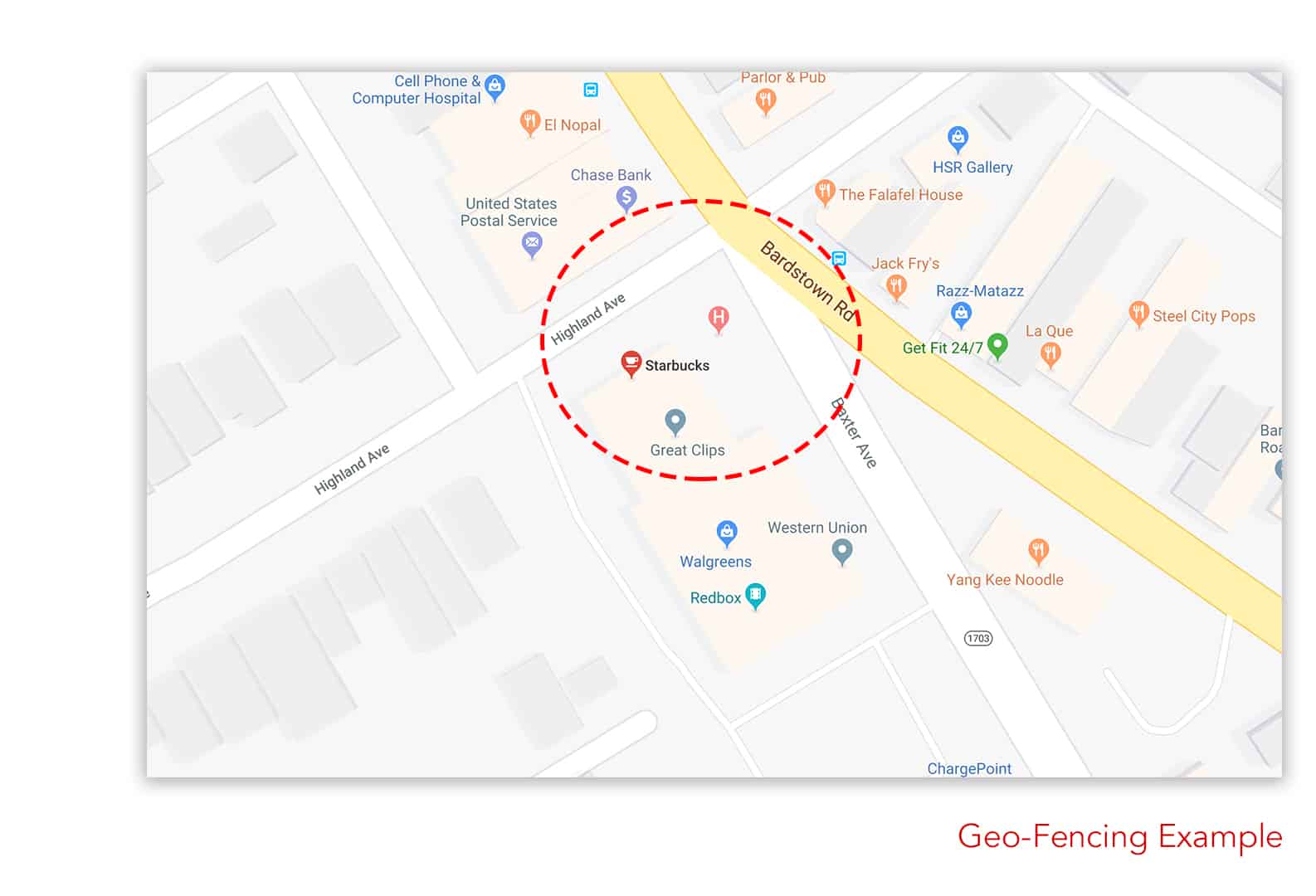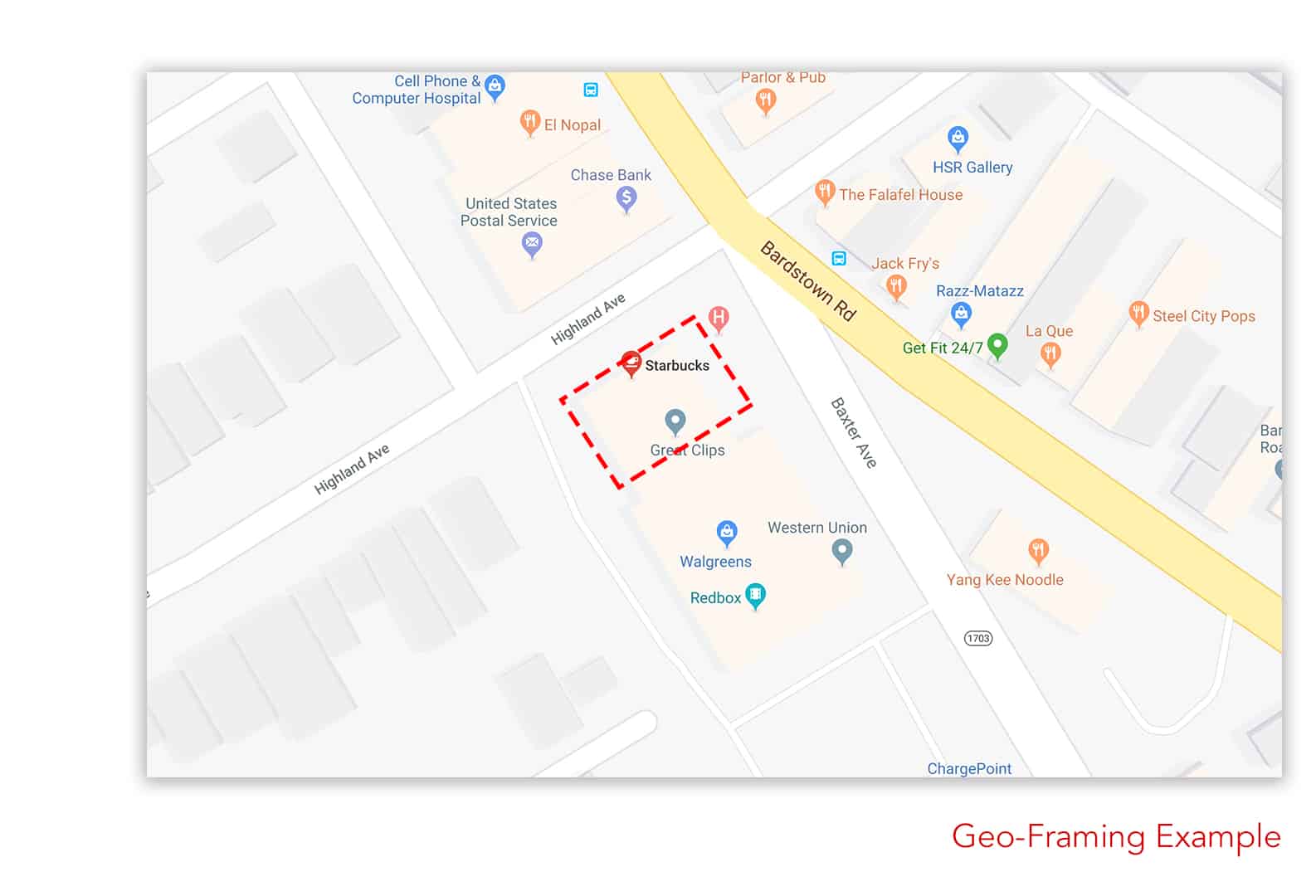blog
Unveiling Geofencing: Exploring the Tech and Real-Life Cases
Geofencing revolutionized targeted advertising in the 2000’s and early 2010’s by creating virtual boundaries that trigger responses when mobile devices enter or exit specific areas. While it offers advertisers solid location-based targeting capabilities, its limitations are increasingly evident. Enter El Toro’s GeoFramingTM, unlike traditional geofencing, GeoFraming operates at a hyper-granular level, utilizing historical data rather than live feeds to target consumers. This blog explores the key differences between geofencing and GeoFraming, showing that historical location data can revolutionize digital advertising strategies.

Geofencing is the use of GPS or RFID technology to create a virtual geographic boundary, enabling software to trigger a response when a mobile device enters or leaves a particular area. For advertisers, geofencing gives the ability to target mobile devices when they’re near a specific location, a competitor, or their own.
Much of the time, however, geofencing can be limiting. Because geofencing can only reach target customers in real time, it presents too many limiting factors. For example, if you ran a cereal brand and advertised using geofencing, you could only reach shoppers while they were at geofenced grocery stores. So your target would need to be on their phone, and in an application that hosts ads in order to see your cereal ad.
Geo-Fencing vs. Geo-Framing
Geofencing involves creating virtual boundaries that trigger certain actions or messages when individuals enter those boundaries. Geofencing uses cell towers to triangulate the approximate location of prospects, serving ads to them in real time. The idea of geofencing can be useful for post-campaign reinforcement or brand awareness to your most loyal customers.

In the digital space of geolocation technologies, however, there’s a new player: GeoFraming. Introduced in 2017 by El Toro, it piggybacks off the idea of geofencing and takes it much farther. GeoFraming doesn’t utilize cell tower service. Instead, GeoFraming focuses on the latitude and longitude of a specific location - down to the square-meter level.
This gives a more granular and precise look at a geographical location, cutting out the noise of those people who are just passing through your GeoFrameTM. The biggest difference, however, is GeoFraming takes historical data, not live data.
Geofencing On Steroids: Historical Data
GeoFraming takes the historical data found in a single location at a specific time and collects the Device IDs seen in that desired venue. In other words: a coffee shop could GeoFrameTM around their locations and pull the device IDs present within those buildings up to six months ago. From here, the coffee shop can advertise to those device IDs via mobile targeting in El Toro’s system.
GeoFraming doesn’t stop here though. It also ties that captured device ID back to a household address, giving advertisers the ability to send IP-targeted advertisements or direct mail. This one-to-one marketing approach is only capable with GeoFraming.

Geofencing can have a place in an advertiser’s omnichannel approach. Focusing brand awareness on your most loyal customers has great benefits. What’s even more powerful though, is getting in front of intenders while they’re in market.
El Toro is revolutionizing programmatic media and Account Based Marketing through its patented approach of matching physical addresses to IP addresses, allowing clients to effectively target consumers. The El Toro system is 100% cookie-free and its proprietary approach connects with real people at an unparalleled accuracy, eliminating ad fraud. With a 95% or greater confidence level, El Toro is the premier choice for digital advertising. For a more in-depth look at GeoFraming, click here. For more information on El Toro’s services, click here. If you are ready to run with the bull, contact us.
Understand And Reach Your Student Audience: 3 Digital Strategies For Higher Education
What Are The Best Tools For Digital Advertising In Higher Education? Digital advertising is a powerful tool for higher education institutions to reach niche audiences of potential students and parents at the household level. With...
Read More
4 Hyper-Targeted Strategies For The January Fitness Spike
It’s the most exciting time of the year - for the fitness industry. Every year resolutions are made with fitness, losing weight, and eating better ranking at the top of the list. The new year...
Read More
What Will Open Enrollment Marketing Look Like This Year?
The yearly period in the fall when people can enroll in a health insurance plan for the next calendar year is approaching. Each year brings opportunities for health insurance companies to recruit and maintain customers,...
Read More
IP Targeting: For Black Friday, Cyber Monday, And All Your Retail Advertising
The countdown begins The day after Thanksgiving kicks off some of the biggest shopping days, Black Friday and Cyber Monday. Last year, the shopping holiday saw a total of 155 million American shoppers, with 88...
Read More
Ready to Run With the Bull?
Contact Us



